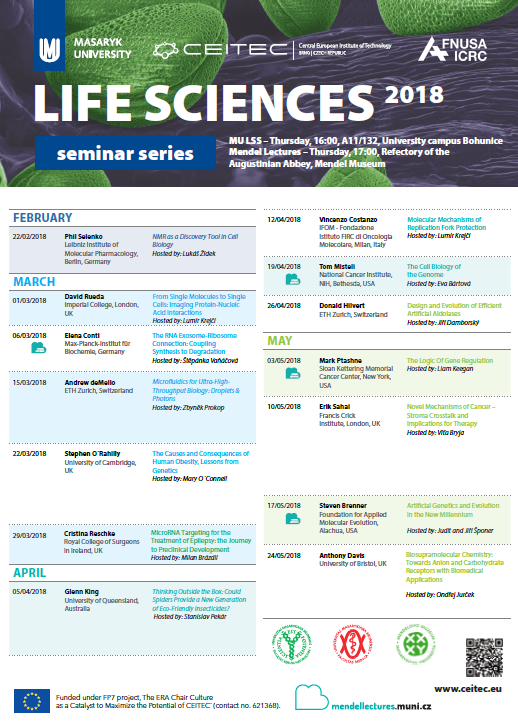About event
 Life Sciences Seminar Series
Life Sciences Seminar Series
Abstract
Maintenance of genome integrity during DNA replication relies on several other factors that do not directly participate in DNA synthesis. Among these there are proteins that are important to respond to DNA lesions and structures impairing replication fork progression. These factors are believed to be particularly important for replication of specific chromosome regions with complex or repetitive DNA sequence composition. In my group, we combine the use of biochemical analysis based on the Xenopus egg extract with advanced imaging techniques based on transmission electron microscopy (EM) to visualize replication intermediates obtained from genomic DNA replicated in extracts depleted of essential DNA metabolism proteins. This approach allowed us to uncover for the first time a major role for RAD51 in preventing Mre11 mediated processing of nascent synthesized DNA behind replication forks (Hashimoto et al 2010, NSMB). More recently, we have shown that extensive DNA degradation is triggered by the formation of reversed forks at stalled forks operated by SNF2 helicases (Kolinjivadi et al 2017, Mol Cell). These pathways are likely to play a major role at repetitive DNA, including the centromeres, which we have shown to be enriched for DNA repair factors (Aze et al 2016, NCB). This work will be discussed in light of recent results obtained on replication fork protection mechanisms.
- Rad51 protects nascent DNA from Mre11-dependent degradation and promotes continuous DNA synthesis. Hashimoto Y, Ray Chaudhuri A, Lopes M, Costanzo V. Nat Struct Mol Biol. 2010 Nov;17(11):1305-11.
- Smarcal1-Mediated Fork Reversal Triggers Mre11-Dependent Degradation of Nascent DNA in the Absence of Brca2 and Stable Rad51 Nucleofilaments. Kolinjivadi AM, Sannino V, De Antoni A, Zadorozhny K, Kilkenny M, Técher H, Baldi G, Shen R, Ciccia A, Pellegrini L, Krejci L, Costanzo V. Mol Cell. 2017 Sep 7;67(5):867-881
- Centromeric DNA replication reconstitution reveals DNA loops and ATR checkpoint suppression. Aze A, Sannino V, Soffientini P, Bachi A, Costanzo V. Nat Cell Biol. 2016 Jun;18(6):684-91.


